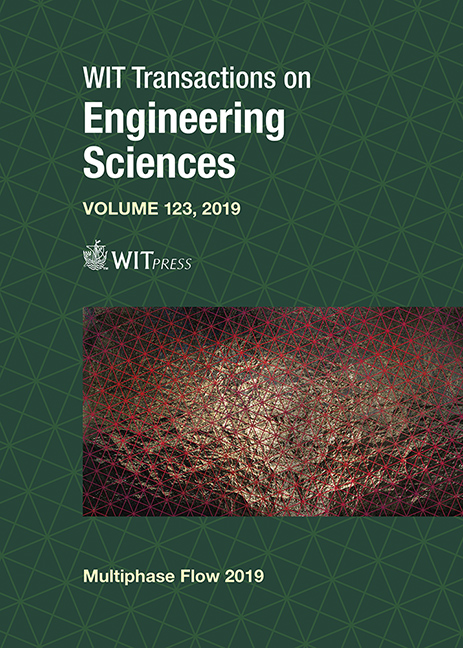ANALYTICAL MODEL AND NUMERICAL STABILITY ANALYSIS FOR FALLING LIQUID FILM REGIMES IN VERTICAL PIPES
Price
Free (open access)
Transaction
Volume
123
Pages
12
Page Range
89 - 100
Published
2019
Size
471 kb
Paper DOI
10.2495/MPF190091
Copyright
WIT Press
Author(s)
JOSÉ LUIS MUÑOZ-COBO, SUSANA M. IGLESIAS, DANY S. DOMINGUEZ, ALBERTO ESCRIVÁ, CÉSAR BERNA
Abstract
Gravity-driven falling film flows in vertical pipes are relevant in many industrial processes like evaporators, chemical reactors, and condensers. The wave formation and propagation processes, which continuously take place in the film, have a strong influence on the flow hydrodynamics and the heat and mass transfer phenomena. Several researchers have been studying the wave behaviour in these multiphase regimes through experimental works and computational fluid dynamics simulation techniques. In some simplified cases, like high viscosity fluids and infinity inclined plates, analytical solutions have been obtained. In this work, we propose an analytical model for falling film flow regimes in vertical pipes. Starting from the incompressible axisymmetric Navier–Stokes equations in cylindrical coordinates, we consider the force balance in the fluid, an asymptotic long-wave approximation and the first-order perturbation approximation for axial velocity. From this balance, we obtain a partial differential equation that describes the interface behaviour through the film thickness. The resulting equation can be solved using a numerical approach. The main resulting equation represents a stiff problem, thus, we perform a stability analysis using the fluid viscosity as a parameter. Finally, we set the model validity conditions and suggest some actions to improve the numerical strategy in order to better describe low viscosity fluids.
Keywords
falling liquid film, analytical model, vertical pipes, Navier–Stokes equations





